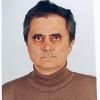Dear all, In API 560, section 14.1.7, it is required a maximum heat release as a percentage of normal heat release at design conditions (understood, process design conditions). Maximum heat release per burner requirements are based on safety concerns? For instance, if a fired heater is equipped with a burner which maximum heat release exceeds 14.1.7 requirements, other safety measures should be taken to limit burner maximum heat release to percentages of the aforementioned paragraph? I've submitted a Request for interpretation (RFI)to API with this question, but API answered that "Due to limited committee resources, API cannot respond to questions seeking the rationale for requirements in its standards", which is logical. I saw numerous DSs with maximum heat releases exceding this requirement, but my doubts lasts. Which are your opinions? Thanks and regards, Hernan
PS: Paragraph 14.1.7 is the following: "All burners shall be sized for a maximum heat release at the design excess air based on the following: a) five or fewer burners: 120 % of normal heat release at design conditions; ![]() six or seven burners: 115 % of normal heat release at design conditions; c) eight or more burners: 110 % of normal heat release at design conditions."
six or seven burners: 115 % of normal heat release at design conditions; c) eight or more burners: 110 % of normal heat release at design conditions."
Edited by HLO, 25 February 2013 - 06:33 PM.

 FB
FB













